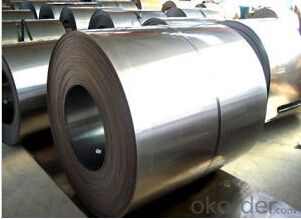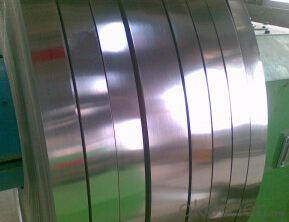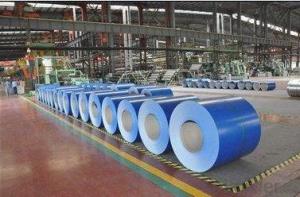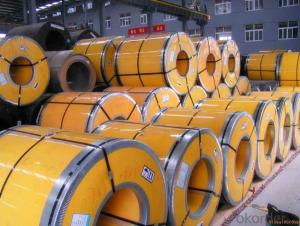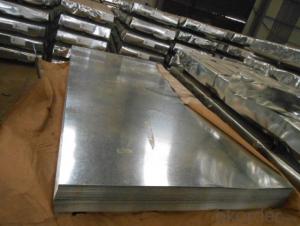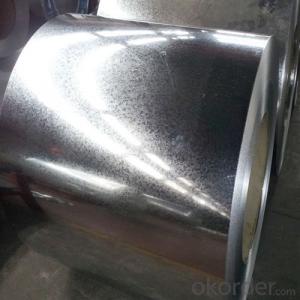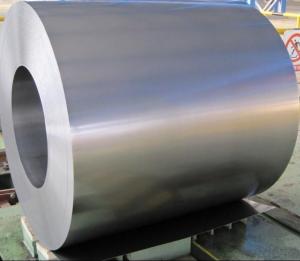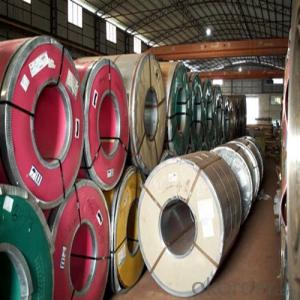Hight Quality Galvanized Steel (0.12-1.2mm)
- Loading Port:
- Tianjin
- Payment Terms:
- TT OR LC
- Min Order Qty:
- 25 m.t.
- Supply Capability:
- 10000 m.t./month
OKorder Service Pledge
OKorder Financial Service
You Might Also Like
Basic Info.
Surface Treatment:Galvanized
Certification:ISO, SGS
Technique:Hot Rolled
Standard:ASTM, JIS, GB, AISI, DIN, BS
Application:Boiler Plate
Edge:Slit edge
Stock:Stock
Steel Grade:Q235B
Size:0.12-1.2mm
Export Markets:Global
Additional Info.
Packing:Standard
Standard:CE
Origin:China
Production Capacity:50000psc
Product Description
NAME: Color Coated Galvanized Steel Coil/PPGI
SIZE:
Thickness: 0.12-1.2mm
Width: 600mm-1250mm (STD914mm,1000mm, 1200mm, 1219mm, 1250mm)
Thickness tolerance: +/-0.02mm or control in 0.1 according to customer's requirement
Width tolerance: +/-2mm
JIS G 3312, ASTM A755, EN10169,GB/T2518
Base sheet: Galvanized steel coils\ Galvalume steel, such as SGCC, CGCC, DX51D+Z, Q195,etc
Base metal: Hot galvanized steel or PrePainted Galvanized aLuminium steel or HBR>85
Techinque: Cold rolled, hot-dipped galvanizing, color coated
Quality: CQ DQ prime
| Commodity | Color Coated Galvanized Steel Coil/PPGI |
| Techinical Standard | ASTM, JIS, GB, AISI, DIN, BS |
| Grade | Q195 Q235 Q235B SGCC DC51D DC52D DC51D+Z |
| Thickness | 0.12-1.2mm |
| Width | 600-1250mm |
| Coil weight | 3-6tons |
| Type of coating | Galvanized |
| Zinc coating | 30-120G/M2 |
| Coil ID | 508mm or 610mm |
| MOQ | 25 MT |
| Supply capacity | 300000MT/per year |
| Package | standard sea worthy package |
| Origin | Shandong Province.China |
| Trademark | |
| Application | Industrial panels, roofing and siding for painting |
| Price terms | FOB, CFR, CIF |
| Payment terms | 30%T/T in advance+70% T/T or irrevocable 100% L/C at sight |
| delivery time | 10-20 days after recepit of 30% T/T |
| Remarks | Insurance is all risks |
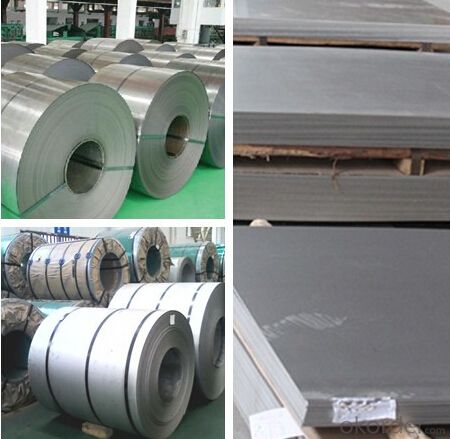
FAQ
1.What's your MOQ?
25MT, it is for one container.
2.Do you have QC teams?
Yeah, sure, our QC team is very important, they will keep the quality control for our products.
3. What's your normal delivery time?
Our delivery time about 10-20days for standard sizes, if you have other requirements like hardness and width ,it is about 20-40days. But don't worry ,we also try our best for the delivery time ,because time longer and our cost is higher.
4.Are the products tested before shipping?
Yes, all of our PPGI and GI was qualified before shipping. We test every batch every day.
- Q: How are steel coils used in the manufacturing of construction formwork?
- Steel coils are used in the manufacturing of construction formwork to provide structural stability and reinforcement. The coils are processed and shaped into various components, such as beams, columns, and panels, which serve as a framework for pouring concrete. The strength and durability of steel make it an ideal material for withstanding the pressure and weight of the concrete, ensuring the stability and longevity of the formwork during construction.
- Q: What are the typical lead times for ordering steel coils?
- The typical lead times for ordering steel coils can vary depending on several factors, including the supplier, the quantity and specifications of the coils, as well as the current market conditions. However, on average, lead times can range from a few weeks to a couple of months. It is always recommended to contact the specific supplier for more accurate information regarding lead times.
- Q: Are you people aware of commercial steel warehouses, If yes then can you please explain their advantages and benefits?
- Steel okorder /
- Q: How are steel coils inspected for surface finish variations?
- Steel coils are inspected for surface finish variations by using techniques such as visual inspection, magnetic particle inspection, and surface roughness measurement.
- Q: What are the different methods of protecting steel coils from corrosion?
- There are several methods for protecting steel coils from corrosion. One common method is applying a protective coating, such as zinc or epoxy, which acts as a barrier between the steel surface and corrosive elements. Another approach is using corrosion inhibitors, which are chemicals that can be added to the storage environment or applied directly to the steel to reduce the rate of corrosion. Additionally, proper storage conditions, such as controlling humidity levels and preventing exposure to moisture and chemicals, can also help protect steel coils from corrosion.
- Q: Is boron steel or carbon steel a harder metal? Which one is more flexible?
- Boron is classified as a Metalloid element and is located in Groups 13, 14,15, 16 and 17 of the Periodic Table. An element classified as a Metalloid has properties of both metals and non-metals. Some are semi-conductors and can carry an electrical charge making them useful in calculators and computers.
- Q: How are steel coils inspected for impact resistance?
- To ensure the durability and ability of steel coils to withstand external forces, they are commonly inspected for impact resistance using various methods. One such method is the drop test, where a steel coil is dropped from a specified height onto a hard surface, simulating the impact it may experience during transportation or handling. During the drop test, the coil is visually examined for visible signs of damage, such as dents, cracks, or deformations. Additionally, other examinations like ultrasonic testing or magnetic particle inspection may be conducted to detect hidden internal defects that could compromise its impact resistance. Another method employed to inspect steel coils for impact resistance is the pendulum test. This involves swinging a pendulum with a known weight and height to strike the surface of the coil. The amount of energy absorbed by the coil during the impact is measured and used to assess its resistance to impact. Furthermore, laboratory tests like Charpy impact testing may be conducted on steel coils to determine their resistance to sudden impacts. This test involves striking a notched sample of the coil with a pendulum hammer, measuring the energy absorbed by the sample, and evaluating its impact strength. Overall, a combination of drop tests, visual inspections, non-destructive testing methods, pendulum tests, and laboratory tests are employed to inspect steel coils for impact resistance. These inspections ensure that the coils meet the required standards and can endure the potential challenges they may face during transportation, storage, and usage.
- Q: What are the safety considerations when handling steel coils?
- When handling steel coils, there are several safety considerations that should be taken into account. Firstly, it is essential to wear appropriate personal protective equipment (PPE) such as gloves, safety glasses, and steel-toed boots. This protective gear helps to minimize the risk of injuries from sharp edges, flying debris, or accidental contact with the coils. Secondly, it is important to have a clear understanding of the weight and dimensions of the steel coils being handled. Steel coils can be extremely heavy, and improper lifting techniques can result in back strains, muscle pulls, or even more severe injuries. Therefore, it is crucial to use proper lifting techniques, such as bending the knees and keeping the back straight, or utilizing lifting equipment like cranes or forklifts when necessary. Additionally, steel coils can be unstable and prone to rolling or shifting during handling. To prevent accidents, it is crucial to secure the coils properly before moving or stacking them. This can be done by using appropriate lifting attachments, banding the coils together, or utilizing racks or other storage systems specifically designed for steel coils. Furthermore, it is important to be aware of the potential hazards associated with the steel coils, such as sharp edges, oil or grease coatings, or even damage to the coils themselves. It is essential to inspect the coils for any abnormalities or defects before handling them, as well as ensuring that they are stored in a safe and stable manner to prevent accidents. Lastly, proper communication and training are essential when handling steel coils. It is crucial to establish clear communication channels between workers to ensure that everyone is aware of their roles and responsibilities. Additionally, providing training on safe handling techniques, potential hazards, and emergency procedures can help minimize the risk of accidents and injuries. In conclusion, when handling steel coils, it is important to wear appropriate PPE, use proper lifting techniques, secure the coils properly, be aware of potential hazards, and ensure proper communication and training. By following these safety considerations, the risk of accidents and injuries can be significantly reduced.
- Q: I'm searching for the elastic modulus of ASTM A653 galvanized steel sheet. Max points for first person with a response that includes web address of reliable reference - I just haven't found it yet. thanks!
- I've okorder /
- Q: What are the common coil storage conditions?
- The common coil storage conditions include keeping the coils in a dry and well-ventilated area, away from direct sunlight and extreme temperatures. It is also important to store the coils in an upright position, on pallets or racks, to prevent damage and ensure easy access for handling and transportation.
Send your message to us
Hight Quality Galvanized Steel (0.12-1.2mm)
- Loading Port:
- Tianjin
- Payment Terms:
- TT OR LC
- Min Order Qty:
- 25 m.t.
- Supply Capability:
- 10000 m.t./month
OKorder Service Pledge
OKorder Financial Service
Similar products
Hot products
Hot Searches
Related keywords


